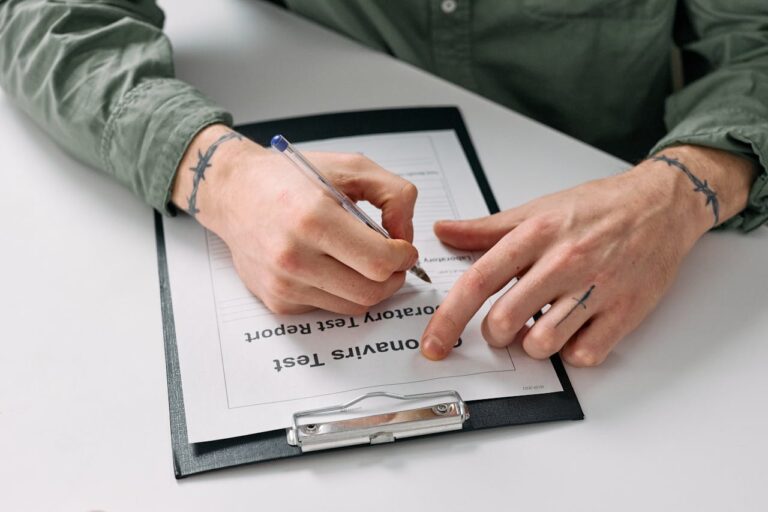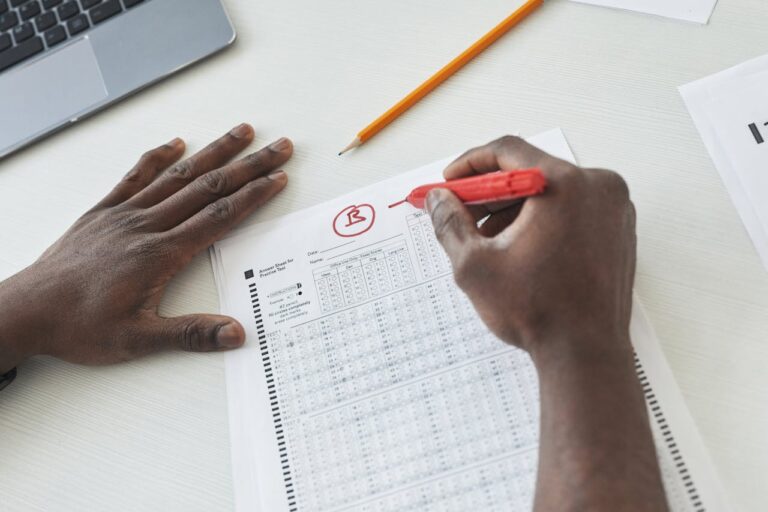Preparing for Your Home Depot Onsite Interview Day

How to prepare for an interview at Home Depot?
To prepare for a Home Depot interview, research the company’s values, practice common retail interview questions, and plan logistics:
Learn Home Depot’s Culture: Review its mission of excellent customer service, teamwork (“One Team”), and safety protocols by exploring the company website and recent news.
Match Your Experience to the Role: Analyze the job description—identify required skills (e.g., product knowledge, problem-solving) and prepare specific examples using the STAR method.
Practice Key Questions: Rehearse answers for behavioral prompts like “Tell me about a time you helped a frustrated customer” and technical scenarios such as locating items or explaining product features.
Plan Your Logistics: Confirm the interview location, arrive 10–15 minutes early, bring multiple resume copies, references list, and any certifications relevant to specialized roles.
Dress and Demeanor: Choose business casual attire with comfortable shoes for a possible store tour; maintain a friendly tone, firm handshake, eye contact, and positive body language.
An onsite interview at Home Depot is your opportunity to showcase not only your skills but also your fit with the company’s customer-focused culture. This guide will walk you through each step—from pre-interview preparation to post-interview follow-up—so you arrive ready to impress.
1. Research and Company Insight
1.1 Understand Home Depot’s Core Values
Excellent Customer Service: Know Home Depot’s emphasis on “One Team” collaboration.
Proactive Solutions: Be prepared to share examples of problem-solving in past roles.
Safety & Integrity: Familiarize yourself with Home Depot’s safety protocols and code of conduct.
1.2 Review the Role and Store Environment
Read the job description line-by-line and match your experience to each requirement.
Visit your target store beforehand to observe the layout, team interactions, and customer flow.
2. Logistics: What to Bring and Where to Go
2.1 Essential Documents
Several Copies of Your Resume: Print on quality paper.
List of References: Include names, titles, and contact information.
Portfolio or Certifications: If applying for specialized roles (e.g., Pro Desk, Tool Rental).
2.2 Location and Timing
Verify the store address and interview location (store office vs. distribution center).
Plan to arrive 10–15 minutes early, accounting for parking and security procedures.
3. Dress Code and First Impressions
3.1 Professional but Practical
Business Casual Attire: Collared shirt or blouse, slacks or neat skirt.
Comfortable Shoes: You may be guided on a store walk-through.
Grooming: Keep jewelry minimal and avoid overly strong fragrances.
3.2 Body Language
Offer a firm handshake.
Maintain eye contact and an open posture.
Smile genuinely to convey approachability.
4. Common Onsite Interview Formats
4.1 Behavioral Interview
Expect questions beginning with “Tell me about a time when…” to assess:
Customer service excellence
Conflict resolution
Team collaboration
4.2 Skills Demonstration
For roles like Sales Associate or Pro Desk:
You may be asked to locate items on the sales floor.
Demonstrate your product knowledge and ability to guide customers.
4.3 Panel or Peer Interview
You could meet with a store manager, department supervisor, and a peer.
Be ready to address each person’s unique perspective—from operations to team fit.
5. Sample Questions and STAR Responses
| Question | STAR-Style Response Tip |
|---|---|
| “Describe a time you handled an upset customer.” | Situation: Briefly set the scene. Task: Your responsibility. Action: Steps you took. Result: Positive outcome and lesson learned. |
| “How do you prioritize tasks during a busy shift?” | Highlight organization tools (lists, check-ins) and adaptability under pressure. |
| “Give an example of improving a process at work.” | Focus on measurable improvements—time saved, errors reduced, or sales increased. |
6. Questions to Ask Your Interviewers
“What does success look like for this role in the first 90 days?”
“How does this team collaborate with other departments?”
“What are the biggest challenges the store faces right now?”
Asking thoughtful questions shows your genuine interest and strategic mindset.
7. Post-Interview Follow-Up
Send a Thank-You Email: Within 24 hours, thank each interviewer and reiterate your enthusiasm.
Reflect and Note: Document questions you found challenging for future preparation.
Be Patient but Proactive: If you haven’t heard back after a week, send a polite status inquiry.
Home Depot Behavioral Interview Questions and Answers
Below are key behavioral questions you’re likely to encounter in a Home Depot interview, along with sample STAR-style answers you can adapt to your own experience.
1. Tell me about a time you provided exceptional customer service.
Sample Answer:
Situation: In my previous retail role, a customer came in upset because a special-ordered appliance shipment had been delayed.
Task: I needed to calm the customer and find a solution that met their needs.
Action: I listened actively to understand their concerns, apologized sincerely, and immediately checked our inventory system. When the part wasn’t available locally, I arranged a loaner unit from a neighboring store and expedited shipping. I then followed up by phone the next day to confirm delivery.
Result: The customer left satisfied, praising our proactive service to store management. We received positive feedback in our monthly survey.
2. Describe a time you resolved a conflict within your team.
Sample Answer:
Situation: Two teammates disagreed about how to restock a high-traffic aisle during peak hours.
Task: As the shift lead, I needed to ensure both efficiency and team harmony.
Action: I paused the task to bring both teammates aside, asked each to share their viewpoint, and acknowledged the validity of both approaches. We agreed to combine methods: one person would restock during quieter moments, while the other focused on rapid turnover in peak minutes.
Result: Restocking became smoother, and the teammates commended the collaborative resolution. Productivity in that aisle improved by 12% that week.
3. Give an example of how you handled a safety concern.
Sample Answer:
Situation: While working in the warehouse, I noticed a damaged pallet that could collapse under heavy boxes.
Task: I needed to address the hazard before it injured someone or damaged products.
Action: I stopped the restocking process, cordoned off the area, and notified my supervisor. Then I helped transfer the merchandise safely onto a new pallet and documented the incident per our safety protocol.
Result: No injuries occurred. My quick action was recognized in our weekly safety meeting, and our team updated the inspection checklist to catch similar issues earlier.
4. Tell me about a time you prioritized tasks under pressure.
Sample Answer:
Situation: During a holiday sale, I was responsible for unloading three trucks while assisting customers on the floor.
Task: I had to balance timely restocking with providing top-notch service.
Action: I created a quick priority list: first, I unloaded safety-critical items; next, I delegated smaller restocking tasks to colleagues; then I alternated between the customer service desk and stocking. I also communicated with my manager to adjust staffing.
Result: We met restocking deadlines, and customer wait times decreased by 20% compared to the previous holiday period.
5. Describe a time you went above and beyond for a customer.
Sample Answer:
Situation: A DIY customer struggled to assemble a complex shelving unit and was ready to return it.
Task: My goal was to save the sale and ensure customer satisfaction.
Action: I offered to walk them through assembly step-by-step right in the store, borrowing tools from our rental department. After we finished, I followed up with an email containing video tutorials and offered a future tool-rental discount.
Result: The customer left happy with both the product and the experience, and later returned to purchase additional hardware, citing the personalized assistance.
6. Give an example of a process improvement you initiated.
Sample Answer:
Situation: Our returns bin was overflowing daily, causing clutter and delays.
Task: I needed to streamline the returns process.
Action: I analyzed return volume patterns and proposed a twice-daily transfer schedule to the back room. I created a simple tracking sheet so associates could log returns and see peak times.
Result: Clutter decreased by 80%, and the returns processing time dropped from 45 minutes per day to 15.
7. Tell me about a time you adapted to change on the job.
Sample Answer:
Situation: Our department was shifted to a new inventory system with only two days’ notice.
Task: I needed to learn the system quickly and help train others.
Action: I stayed late to study the new software guide and created a concise one-page cheat sheet. During the system rollout, I led a brief morning huddle to share key tips and troubleshoot common issues.
Result: Our department had the smoothest transition in the store, with zero inventory errors in the first week.
8. Describe a time you took initiative without being asked.
Sample Answer:
Situation: I noticed we were frequently running out of protective gloves in the hardware section.
Task: Although it wasn’t my assigned responsibility, I wanted to prevent customer frustration.
Action: I tracked glove usage for two weeks and presented the data to my supervisor with a recommendation for an automatic reorder threshold.
Result: The new reorder system was implemented, eliminating stockouts and reducing emergency orders by 60%.
FAQ
Behavioral interviews assess how you’ve handled real work situations. Home Depot uses them to predict future performance based on past actions, focusing on customer service, teamwork, problem-solving, and safety.
Use the STAR method:
Situation: Describe the context.
Task: Explain your responsibility.
Action: Detail the steps you took.
Result: Share the outcome and what you learned.
Key traits include:
Commitment to customer service
Strong teamwork and communication
Proactive problem-solving
Adherence to safety protocols
Dependability and initiative
Typically, you’ll be asked 4–6 behavioral questions during an interview, depending on the role and interview format.
Yes. Review your past experiences—work, volunteer, or academic—and identify situations that highlight Home Depot’s core values. Draft concise STAR outlines for each.
Absolutely. Rehearsing aloud helps you refine your phrasing, manage timing, and build confidence.
Be honest and choose the closest relevant example. Focus on what you learned and how you would handle a similar situation differently next time.
Listen carefully, pause to gather your thoughts, and provide specific details. If you need clarification, it’s acceptable to ask the interviewer to rephrase or elaborate.
Yes. Asking about team dynamics, success metrics, or training programs demonstrates genuine interest and engagement.
Send a thank-you email within 24 hours. Mention one or two highlights from your conversation and reiterate your enthusiasm for the role.






